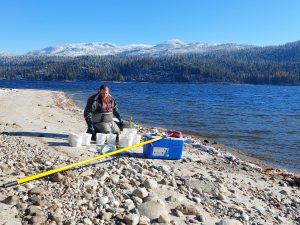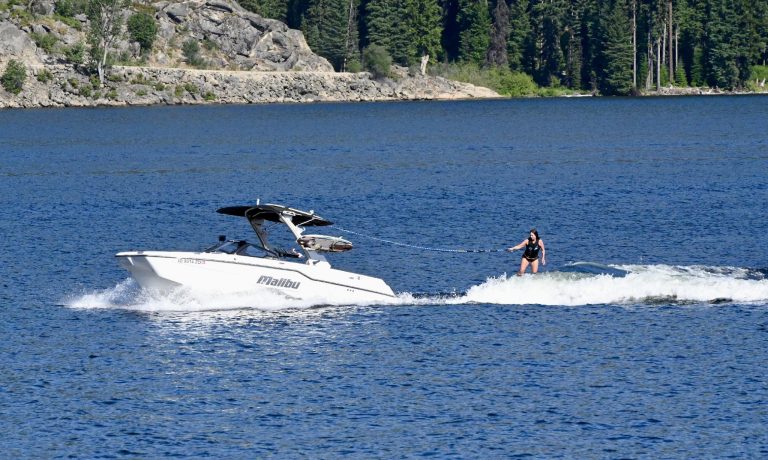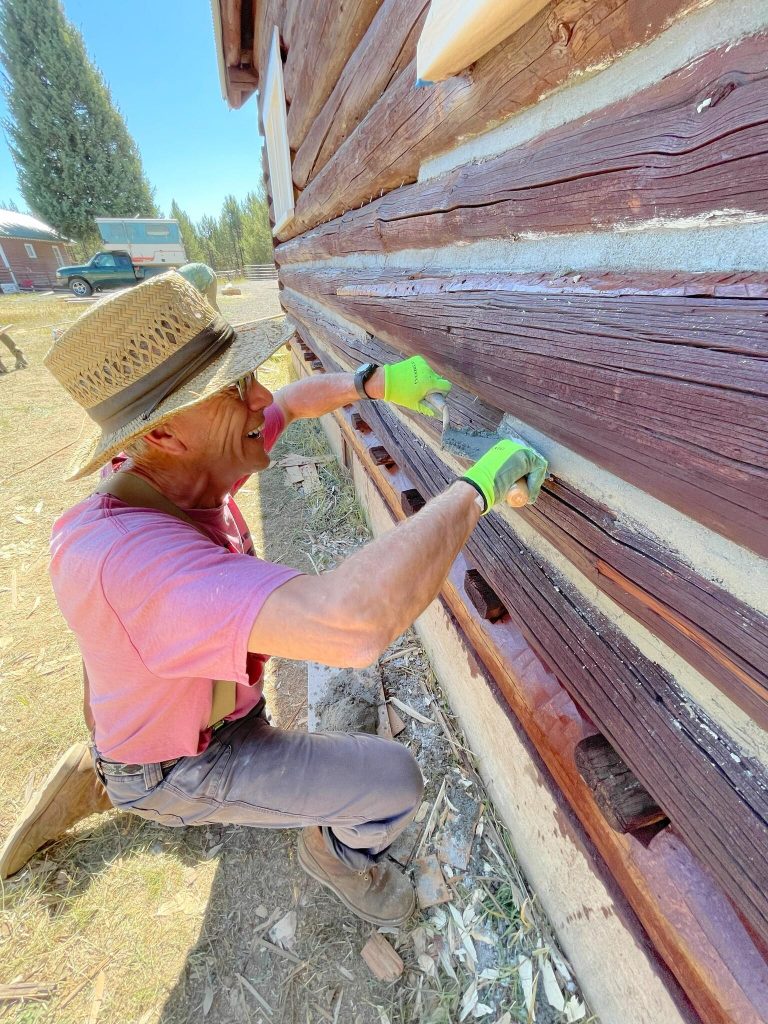Wakes worse than weatherBoats contribute more to water quality than natural waves, study finds
BY MAX SILVERSON
The Star-News
When it comes to no-wake zones, the rule is “the wider the better,” University of Idaho professor Frank Wilhelm told a room of concerned citizens last week.
Wilhelm and graduate student Garret Homer presented the results of a summerlong study of Payette Lake that focused on how wakes from motor boats affect nutrients that harm water quality.
“There is good evidence to show that at 500 to 600 feet, you can mitigate some of the big waves that are coming ashore,” said Wilhelm.
The current no-wake zone is set at 300-feet on Payette Lake and all lakes in Valley County, with some exceptions.
About 90 people attended the presentation at the Payette National Forest Supervisor’s Office in McCall on Thursday, July 11.
Homer completed the bulk of the field and lab work as part of his senior research thesis at the University of Idaho. Wilhelm assisted with field work and data analysis.

The study focused on how waves affect phosphorus concentrations in the area near the shore of Payette Lake. The nutrient is a main contributor to algae growth, which could result in harmful algal blooms, similar to those that have occurred on Lake Cascade in five of the last six years.
The shore of Payette Lake is very sandy, which helps to keep phosphorus contained, but the nutrient is released when the sand is disturbed by wakes and waves.
“At that point becomes really dangerous because this is the stuff that plants really like,” Wilhelm said, describing how phosphorus contributes to algae growth.
The study found that waves from wake boats stirred up more phosphorus than natural waves, and that busier boating days and times of day resulted in more phosphorus.
On every day that samples were collected, phosphorus concentrations were above the recommended levels set out in the Valley County Waterways Management Plan, which was adopted in 2022.
“What this study indicates is that we need to realize the possibility of ‘loving this lake to death,’ said Deb Fereday, president of the Big Payette Lake Water Quality Council.
The constant pressure on the lake, especially during the months of July and August, is directly correlated with phosphorus staying in the water column, Fereday said.
Samples used in the study were taken between June and October last summer from the “near shore” area, which includes water two to 10 feet deep.
“That’s where you’re going to see the change occurring first, because that’s where the nutrients are resuspended and redistributed. It will take a long time before you see it offshore, because Payette is such a large and deep lake,” Wilhelm said.
Samples were collected throughout the day, and compared to the wind speed and number of boats on the lake each day.
“A few boat waves easily raised the phosphorus concentration,” Homer said, noting an uptick in phosphorus after some waves on calm days during the summer.
Storms can generate some large waves, and that affects the amount of phosphorus in the water. But that is a natural process and nutrients settle again on calm days in the absence of any disturbances, Wilhelm said.
People tend to go wake boating on calm days, amplifying the negative effects, he said.
“The question is, what happens when these lakes don’t get a chance to recover?” Wilhelm said.
Closing the lake to motorized boat traffic for part of the week would help the situation, he said, in response to a question from the audience.
Wilhelm noted a steady increase in the popularity of wake boats since 2004, as well as the size of wakes that they are capable of creating.



